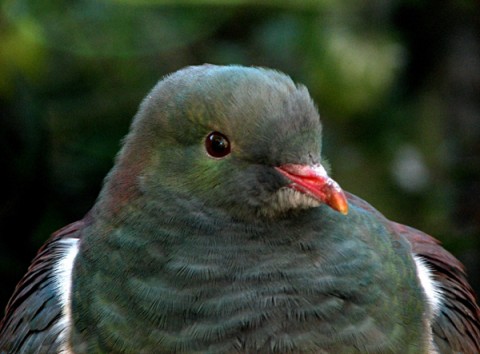Forest Savior
Blogger: Campaign Manager for the kereru, Kiri te Kanawa
In what some may see as a cruel move, European settlers failed to class our kereru as a dove, instead choosing to put them amongst the pigeons, or ‘rats of the sky’.

Kereru, Photo: Michael Hamilton
You see, the term dove and pigeon can be used interchangeably – they all share small heads, a cooing call, slim bills and rounded bodies – and once upon a time they were probably loved equally.
Unfortunately, the introduced Rock Pigeon sullied the name ‘pigeon’ in New Zealander’s eyes by becoming urban riff raff after they become redundant as messenger birds*.
Although the kereru shares many of the traits of a pigeon – namely its voluptuous size – it can be argued that it has the personality of a dove: gentle, innocent and romantic.
As part of its courtship display, the kereru will bob its head , inflate its body, energetically jump up and down and sometimes career skywards, only to stall and plummet to the ground.
Watching these sumo-sized birds perform these display dives is one of life’s true pleasures.
Sadly, in terms of numbers, the kereru may never reach rat-like proportions like our Rock pigeon.
Indeed, it is rats that remain one of their major predators along with possums, and like many New Zealand birds they’re in decline in areas where there is no predator control.
This is bad news, not just for the kereru but also for our native forest.
You see, unlike the European Rock Pigeon, our forest – dwelling Wood Pigeon will never be out of a job because it keeps our forests healthy.
The berries that it throws down its gullet, and passes through its gut arrive on the forest floor in a perfect state to germinate.
And unlike other birds, it can swallow larger berries, such as miro, puriri, tawa and taraire.
So this year, when you’re thinking of where to place your vote give it to this forest-rescuer – the kereru
